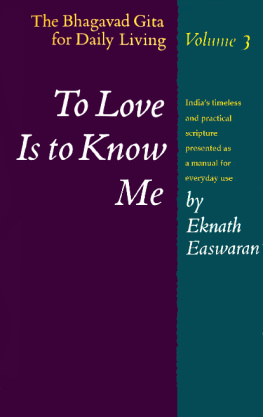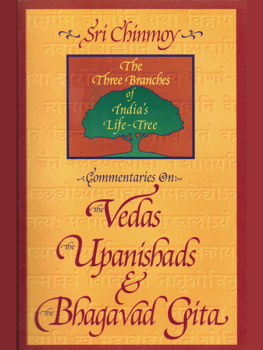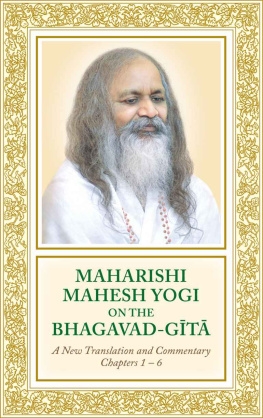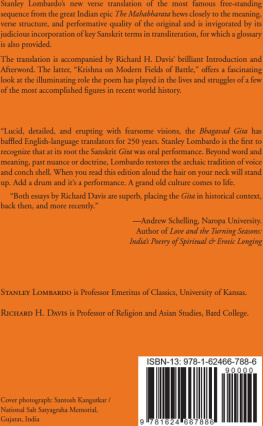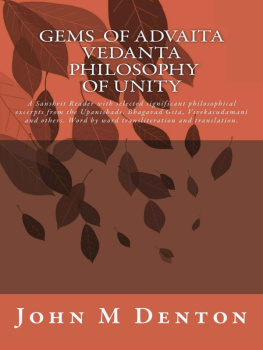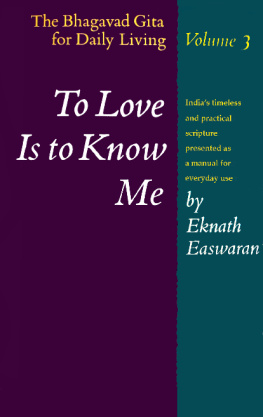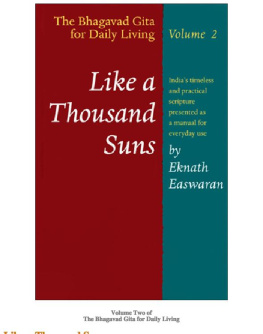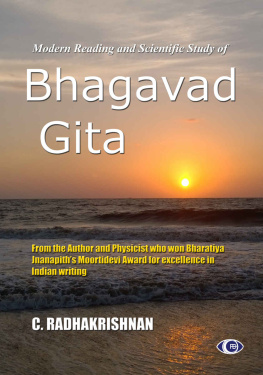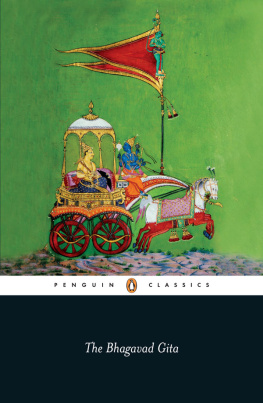Table of Contents
Journey Through the Bhagavad Gita: A Modern Commentary
Copyright 2013 GK Marballi. All rights reserved.
ISBN 978-1-304-37640-4
Published by Azure Publishing USA
Introduction
This book is a compilation of blog entries which were posted daily over a period of two years on http://journeygita.blogspot.com. Each blog post contains a commentary and translation of one verse of the Bhagavad Gita.
Here is the entry which was posted on day one of the project:
*Om Ganeshaaya Namahaa*
Dedicated to all my gurus.
I DECIDED TODAY to begin a blog that is my attempt to understand the Bhagavad Gita.
I cant remember the exact date, but it was around 5 years ago that I chanced upon a television program in India where a prominent teacher of the Gita was conducting a discourse in English, stripped of all the usual pomp and ceremonial activities that usually accompany a discourse. As I watched that program, I realized that there is something here that is attracting me, but I could not quite explain why. I tried to watch that program as often as possible during my 3 month stay in India.
When I returned to the US to continue my work, those Gita discourses stuck in my head. I began to buy commentaries on the Gita from several authors, and eventually came across a teacher whose audio discourses resonated with me. Now I am looking at the end of the 18th chapter (the last chapter) of the Gita, and having gone through it over the course of 2 years, still feel a need to understand it deeply.
This blog is my attempt to restart my journey of the Gita, beginning with the first verse of chapter 1. But this time, I want to go deeper and understand each verse to the best of my ability. I will keep the language as simple as possible, and provide examples that I and most people can relate to.
GK Marballi
16 August 2011
About The Author
GK Marballi works in the technology industry and is presently based out of New York City. He received his bachelors degree in commerce from the University of Mumbai, and his MBA from Harvard Business School.
Arjuna Vishaada Yoga
Bhagavad Gita Verse 1, Chapter 1
Dhritraashtra uvaacha:
dharmakshetre kurukshetre samavetaa yuyutsavaha |
maamakaaha paandavaashchaiva kimakurvata sanjaya || 1 ||
Dhritraashtra said:In Kurukshetra, the field of the Kurus and also the field of righteousness, both my sons and Pandu's sons gathered, eager to fight. What did they do, O Sanjaya?
So begins the first chapter of the Gita. The first chapter is a dialog between Dhritraashtra, father of the Kauravas and Sanjaya, his charioteer and also his adviser. Sanjaya was given divine vision so that he could provide a real-time commentary on the Mahabharata war for the sightless Dhritraashtra.
This verse begins to reveal one of the recurring themes of the Gita - the downside of extreme attachment to objects or situations. Dhritraashtra means someone who clings to his kingdom, and Sanjaya means victory. Dhritraashtra was extremely attached to his sons and his kingdom, which is one of the reasons that the Mahabharata war occurred. He refers to his nephews as "Pandu's sons" indicating that they are a 3rd party, whereas his sons are referred to as "my sons".
What exactly is attachment? Here's an example. Let's say Mr. X brought a brand new car. He shows it to all his friends, they ooh and they aah, his spouse is happy, his kids are jumping up and down and so on. When he hears all the praises, there usually is something inside him that "puffs up". That thing is the ego. Now let's say a few weeks have passed. It's morning and as he opens the car door, he notices a large dent on the side of the car. He begins to experience anger, sadness, and a whole host of other emotions.
What just happened? It was attachment to the car. Mr. X's ego created an identification with the new car. In other words, it began to think of the car as an extension of its identity. So any praise for the car became the ego's praise, and any harm to the car became the ego's harm. The ego strengthens itself by attachment, i.e. identification with objects, thoughts (I am smart, I am sincere etc), positions (e.g. right wing vs. left wing). Eckhart Tolle talks about ego and attachment in his books "The Power Of Now" and "A New Earth".
So what is the practical lesson here? Later chapters and verses will go in detail into this subject, but till then, this verse urges us to examine our life and take stock of our attachments. What are our attachments? How strong are those attachments? What can we do to prevent ourselves getting entangled in more and more attachments?
Also - at this point, do we think that all attachments are bad? Or are some good? Upon introspection we will find the answers. The Gita will begin to address those questions as we go further into it.
Bhagavad Gita Verse 2, Chapter 1
Sanjaya uvacha:
dhristvaa tu paandavaanikam vyoodham duryodhanstadaa |
aachaaryamupasangmaya raaja vachanambraveet || 2 ||
Sanjaya said:Observing that the Pandava army was organized into a military formation, Duryodhana approached his teacher Drona and spoke these words.
Let's look at the character that is introduced in this verse - Duryodhana. Duryodhana was the son of Dhritrashtra, and leader of the Kaurava army in the Mahabharata war. He was a skilled and strong warrior, almost equal in prowess to Bhima, the strongest warrior in the Pandava army.
Since childhood, Duryodhana grew up with the idea that he was the rightful heir to the throne and not Yudhishtira, who was the eldest brother of the Pandavas. Going back to the theme of the previous verse which is that of attachment, he was extremely attached to the throne. But because he perceived the Pandavas as an obstacle to the throne, which was something that he was extremely attached to, he developed an aversion towards them.
Think of aversion or in other words, hatred, as the polar opposite of attachment. But interestingly enough, it is born out of attachment itself. For example, we saw that Mr. X from the last post was extremely attached to his car, and saw that someone had made a large dent in it. What feeling do you think Mr. X had for the person who caused that dent? That is aversion. Aversion is usually caused when we perceive a person, situation or object as an obstacle between us and the object of our attachment. And aversion, just like attachment, strengthens the ego. Examples are people (I hate my boss), objects (I hate my old TV), positions (I hate anyone who believes in communism) or situations (I hate my job).
Now, why did Duryodhana approach his teacher Drona? He saw the military formation of the Pandavas and began to get scared. As is the case, most people run to someone superior when they get scared, so he approached his teacher for counsel.
Drona was a teacher to both the Pandavas and Kauravas, and had equal affinity to both of them. And unlike some of the other senior warriors, Drona was not a blood relation to the Kauravas. Duryodhana also sensed that he needs to check in with Drona to understand his state of mind, because he needed Drona's prowess to win this war.
There is an interesting leadership lesson here. If you are leading a team - in a business, political or any context - your success is not guaranteed unless everyone buys into a common vision that you as a leader have articulated.
Bhagavad Gita Verse 3, Chapter 1
pashyaitaam paanduputraanaamaachaarya mahatim chamoom |
vyoodham drupadaputrena tava shishyena dheemata || 3 ||
Teacher, behold this mighty Pandava army, that your intelligent student Dhrishtadyumna, son of Drupada, has organized in a military formation for battle.
The Gita has many conversations-within-conversations, so it is useful to keep track. In the first two verses, Sanjaya and Dhritrashtra were talking, and in this verse, Duryodhana is addressing his teacher Drona.



